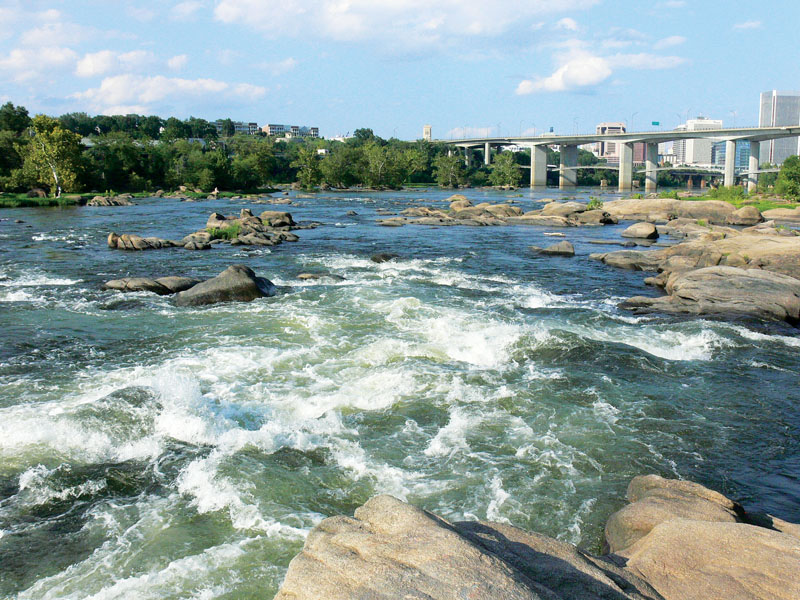It’s easy to take clean drinking water for granted, but we shouldn’t. Because what happened to the poor souls in Flint, Michigan—the highest-profile example of serious water pollution in recent memory—can easily happen elsewhere. Anywhere, really. And according to Marc Edwards, the Virginia Tech professor whose water quality studies broke open the Flint water crisis, Appalachia’s water woes might actually be worse.
Gulp.
As everyone knows by now, widespread elevated levels of lead and dangerous Legionella bacteria were found in Flint’s drinking water supply, potentially causing serious long-term health problems for residents, especially children. What many people don’t know is that Edwards and a team of students were the first to discover the issue after conducting a series of water quality tests, partially in response to the complaints of one Flint resident who, along with her children, suffered rashes, hair loss, and other serious health problems.
Edwards said various government agencies knew about the problem but sat on their hands. He thus spent $250,000 of his own money on essential steps like additional testing, Freedom of Information Act requests, and efforts to publicize the danger. Along the way, he got plenty of help from Flint citizens, the ACLU Michigan, and others. “We had to do the job that government agencies are paid to do but refused to do,” he said. “In the end, we showed that Flint water wasn’t meeting federal safety standards. This was an environmental crime.”
Edwards said his experience working on a similar lead crisis in Washington, D.C. 25 years ago was instructive. “We learned what it takes to expose something like this,” he said. “You have to act immediately and marshal an incredible amount of resources. In Flint, we tried hard to make sure the lessons of D.C. would be learned.”
The good news is that exposing and addressing the problem took eight weeks in Flint, compared to about eight years in the nation’s capital. The bad news is that everyone else in the country, notably in Appalachia, still faces a similar threat. While drinking water pollutants differ by region (in Appalachia, high levels of fecal and other forms of bacterial contamination are some of the main culprits), the cause is the same no matter where you tip a glass to your lips: stripped-to-the-bone municipal budgets and lax enforcement.
Edwards pointed out that there’s no consensus about what to do with post-industrial cities across the nation that have lost thousands of jobs and many of their residents, causing tax revenues to crater. For example, many Appalachian towns burdened by legacies of pollution and hard-hit by job losses in coal and other industries simply can’t afford to meet federal or state water quality standards. Doing so would require huge financial outlays to replace creaking, decades-old water and sewer infrastructure. Moreover, “people in small towns are hardy folk and not likely to complain, and there often aren’t enough to generate a critical mass and a news scandal,” Edwards said. In that respect, at least, Flint residents were lucky.
The upshot is that the EPA doesn’t bother to enforce water regulations that cities can’t comply with anyway. “All across America, one of the biggest untold environmental stories is what will happen to rural towns where agencies look the other way because these towns can’t afford to maintain their vital infrastructure and follow existing law,” Edwards said. That’s arguably worse than having no regulations at all, he added, because “why have a law giving people a false sense of security if you’re not going to follow it?” In that respect, many towns in the U.S. are actually worse off than those in Third World countries, where the residents are at least aware that their water is undrinkable.
As with all seemingly intractable problems, lasting solutions will require Herculean efforts and wholesale cultural changes that might not be in the offing. Consider that according to the American Water Works Association, our buried water infrastructure will need more than a trillion dollars’ worth of maintenance over the next 25 years just to keep it in reasonable shape. Where’s that money going to come from, especially for small, post-industrial towns that can barely make ends meet?
“As a society, we need to think about how we help places that have been left behind and ask whether water is a right or a privilege,” Edwards said. “We have to decide whether we’re going to follow existing laws and what to do about cities that chronically violate them. Is this the end game, where the regulator tells the city to stop breaking the law and the city keeps on doing it because it couldn’t do anything else? Maybe our solution is to let these towns die, and in the meantime say you live there at your own peril.”








